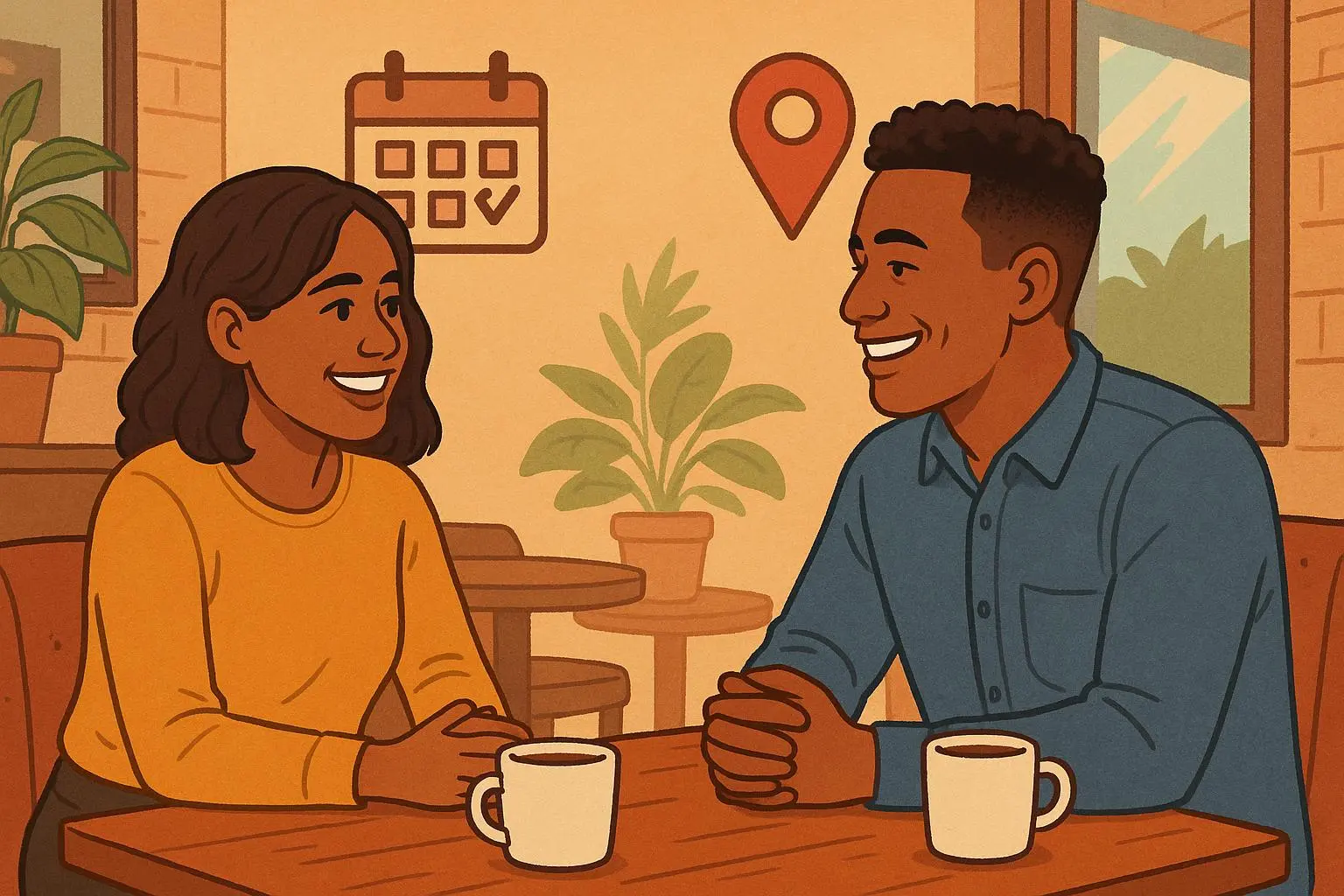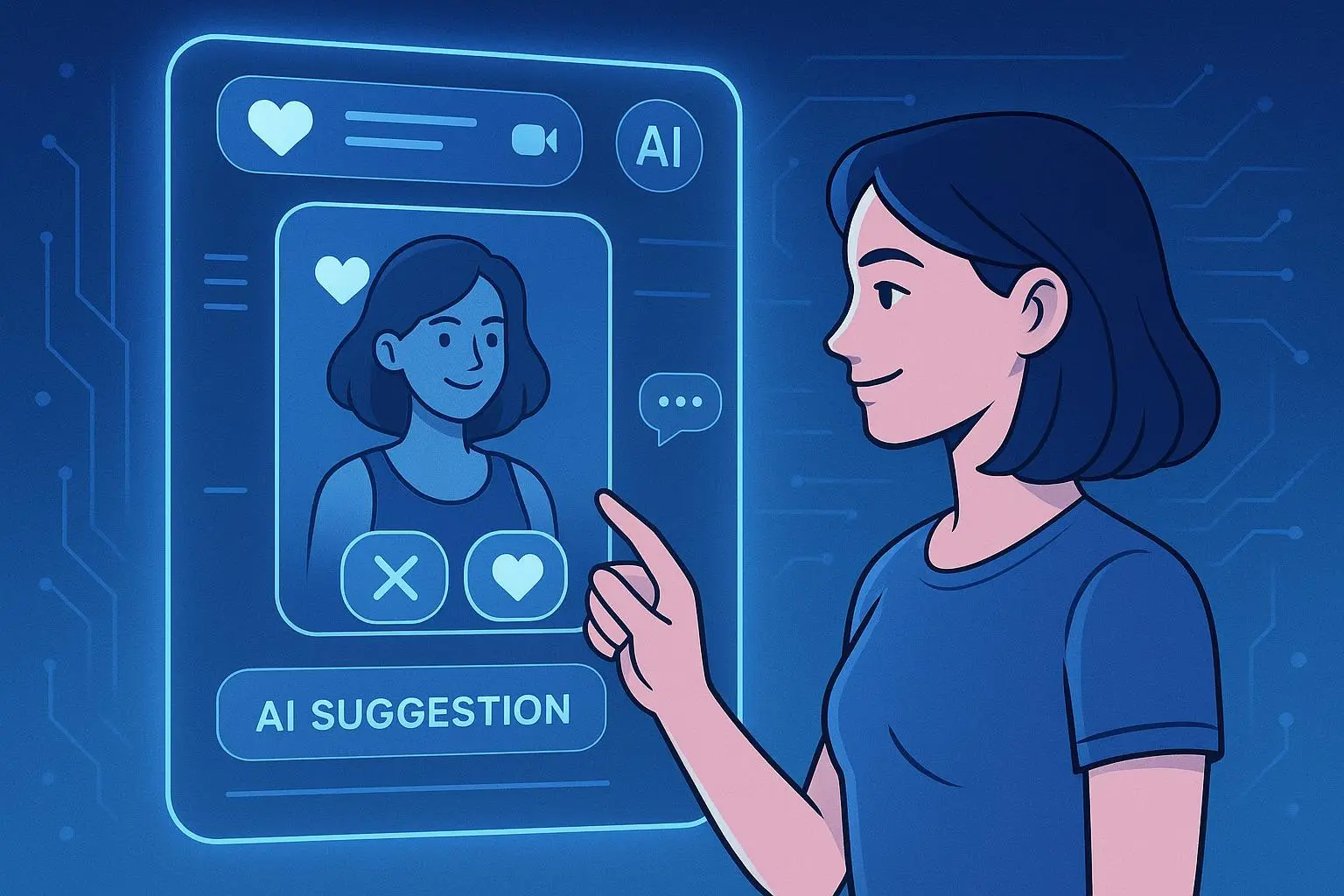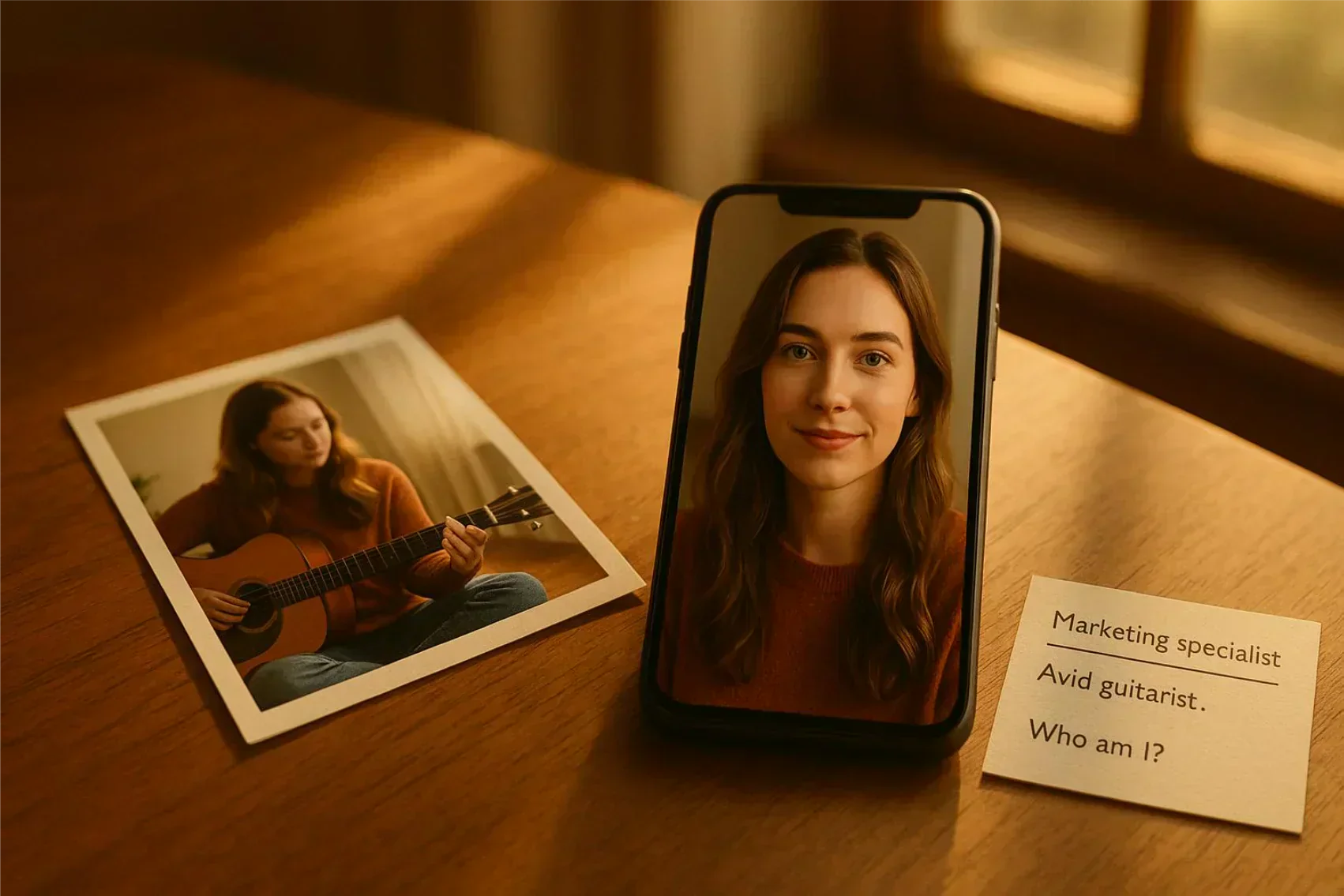
How to Ask for a First Date: Timing, Venue, Mindset
Published on 3/28/2025 • 6 min read
I still remember the nervous thrill of turning a friendly chat into an actual plan. It felt like translating a private joke into a public performance: exciting, slightly terrifying, and totally worth it when the conversation flowed in person. Over the years I moved from awkward first attempts to a calmer, more confident approach — and this is the exact step-by-step playbook that helped me turn more matches into meetups.
This guide is practical and conversational. No rigid rules, just sensible timing, venue choices that reduce pressure, and mindset shifts to keep things relaxed. Whether you’re swiping, matching, or messaging, you’ll find a playbook for moving from match to meetup with more ease and less overthinking.
When to Ask: Timing Your Ask for a First Date
Timing is the easiest place to get it wrong. Ask too soon and you can seem desperate; wait too long and momentum fizzles. I learned this concretely in 2018: I waited ten days after a promising match, and the thread cooled into one-week messages that never led anywhere. After testing a faster approach in 2019, I shifted to asking around day 4–5 and saw my match-to-meetup rate jump from roughly 20% to about 60% over six months.
Gauge the vibe
Before you ask, look for signs the other person is engaged. It’s less about counting messages and more about whether the conversation feels alive: they ask thoughtful questions, share short stories, or send playful voice notes.
If replies are short, delayed without explanation, or the chat reads like a Q&A, pause or try to shift the tone first. A quick test: introduce a low-stakes, fun idea and see how they respond — their enthusiasm will tell you if it’s time to propose a plan.
The "sweet spot" for asking
From experience and observing friends, 3–7 days of consistent, engaging conversation is a reliable window.
- 1–2 days can feel rushed.
- 3–7 days builds rapport while keeping momentum.
- 8+ days increases the risk of the connection cooling.
Context matters — if you’re both busy but intentional, a slightly longer stretch can still work. The rule: don’t let the spark cool.
How to ask: smooth, specific invites
The most natural asks connect to something you’ve already discussed. That turns a generic invitation into a personal one.
Examples I’ve used successfully:
- “You love small-batch coffee. There’s a cozy spot with great pour-overs — want to meet there this weekend?”
- “We both hate terrible movie endings — an indie theater has a cult screening Friday. Want to check it out?”
- “I’ve enjoyed our chats. Want to continue this over a drink next week?”
Short, specific, and tied to the conversation. Offer two times if you can; it makes choosing easy.
Best Low-Pressure First Date Venues (Choosing the Perfect Place)
Once you have a yes, the venue becomes your secret weapon. The right place makes conversation easy, reduces anxiety, and gives both of you permission to keep things low-key.
Aim for short, flexible dates — roughly 1–2 hours. Think of the first date as a chance to sample someone, not a multi-course exam.
Good choices include a well-reviewed coffee shop, a casual bar for a single drink, or a playful spot like an ice cream or boba shop. Weather permitting, a short walk in a popular park can be great too. Match the venue to the vibe you’ve built in chat: intellectual chats → bookstore or gallery; playful banter → mini-golf or an arcade.
A quick logistical and safety checklist (short):
- Is it public and well-trafficked?
- Is it convenient for both of you?
- Did you confirm exact meeting spot and time?
Avoid movie theaters, loud clubs, expensive tasting menus, or anyone’s home for a first meetup — those either limit conversation or create uncomfortable expectations.
Mindset: How to Show Up (Expectations for Success)
How you show up mentally matters as much as the planning. I used to treat dates like job interviews — polished, guarded, and exhausted afterward. After changing my approach, I started treating dates as experiments focused on connection rather than performance.
Goal: connection, not perfection. Ask yourself: am I enjoying this person’s company? Swap “Do they like me?” for “Do I like them?” That shift makes you more authentic, which is more attractive.
Confirm the plan the day of with a short text: “Hey — looking forward to [Venue] around [Time]!” Be punctual; if you’re running late, text a quick ETA.
Keep topics light and present. Start with easy prompts (weekend plans, favorite ways to relax, a funny anecdote from chat). If a silence appears, use the environment — the coffee shop’s playlist, the barista’s latte art, or a quirky detail — to re-anchor the conversation.
Practical Moves During the Date
Small choices during the date make a big difference.
- Body language: soft eye contact, open posture, and leaning in slightly signal interest without words. Listen actively: echo back a detail they shared and ask a follow-up.
- Bill etiquette: if you invited, offering to cover the first round is courteous. If it’s unclear, suggest splitting with a casual “Want to split?” Keep it relaxed — don’t make it a test.
- Exiting: end naturally. If you want to continue, say so. If not, be honest and kind.
Phrases that work:
- To continue: “I’m having a great time — want to grab another drink or take a walk?”
- To suggest another date: “This was fun. Want to do this again sometime?”
- To close gently: “I appreciate tonight. I think you’re great, but I don’t see us as a fit — wanted to be honest rather than ghost.”
After the Date: Follow-up and Next Steps
If you had a good time, message within 24 hours. Be specific: mention a moment you liked to make the compliment feel real.
Examples:
- “I had a great time tonight. Your travel mishap story made my day — want to meet again next week?”
- “Thanks for tonight. I enjoyed our chat about [topic]. Want to try that new taco place Saturday?”
If you don’t want to continue, a short respectful message is kinder than silence.
When Dates Don’t Go as Planned
Not every date will be magical. I’ve had pleasant-but-forgettable dates and a few that were awkward. One concrete misstep I made: a date in 2020 where I dominated the conversation with career talk — she left early, and I learned to save heavier topics for later. Reflect briefly after a date: was the mismatch about values, vibe, or expectations? Use that to refine how you screen or pick venues next time.
If a date ever feels unsafe, leave immediately. Your well-being comes first.
Quick Decision Hacks (When You Can’t Decide Where to Go)
When picking a place is the hardest part, try two quick hacks I use:
- Default to a highly rated coffee shop that’s easy to reach.
- Suggest an activity you both mentioned in chat.
If you want more ideas, try a date-idea generator or local event listings to get tailored suggestions based on city, budget, and vibe.
Closing Thoughts: Make It Your Own
There’s no single right way to plan a first date. What matters most is intention: be clear, be respectful, and choose options that make conversation and safety easy. Over time you’ll build instincts about timing, venues that suit your style, and how to show up in ways that feel authentic.
Final piece of practical advice: treat dating as practice for genuine human connection, not a high-stakes audition. If you can enjoy the process — even the awkward bits — you’ll meet people more authentically and feel better when dates don’t pan out.
Go ahead, ask for that coffee, pick a cozy spot, and remember: the goal is to enjoy someone’s company for an hour or two. Everything else is a bonus.
Personal Anecdote
A few years ago I was stuck in a loop of hesitant small talk and vague invitations. I shifted to ranking conversations by what felt easy to translate into an actual plan. The moment I started asking with concrete venues and two time options, I noticed a real lift in how fast people said yes. It wasn’t magic—just a small tweak that made the next step clear and comfortable. I kept a simple rule: if I wouldn’t be excited to join, I didn’t ask. That clarity spared me a lot of mixed signals and helped me move from a few matches to real plans. It’s not foolproof, but it’s reliably better.
Micro-moment
I once tested a quick idea: after a good chat, I proposed meeting at a coffee shop I’d seen recommended in a friend’s feed. The reply came in minutes, and the plan stuck. That tiny nudge—the specificity and immediacy—made the difference between “maybe” and “yes.”
References
Ready to Optimize Your Dating Profile?
Get the complete step-by-step guide with proven strategies, photo selection tips, and real examples that work.


